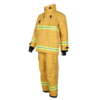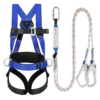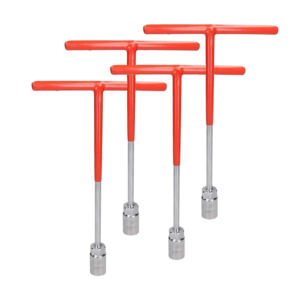🚚 Fast Delivery | ⭐ Best Quality | 📞 24/7 Support
+971 2 552 3918
info@coolwaybm.com
- Power Tools & Machinery
- Fire and Safety Equipement
Fire and Safety Equipement
- Adhesives
- Plumbing & Sanitary
- Packing Materials
Packing Materials
- Abrasives
- Carpentry
- Welding Accessories
Welding Accessories
- Fasteners
- Lock & Furniture Accessories
Lock & Furniture Accessories
- A/C Refrigeration
- Electrical
Electrical
د.إ1.00


د.إ1.00
You can add any HTML here
We suggest you to create a Saved Template in Dashboard -> Templates -> Saved Templates and use it by switching content type above to Saved template.
Safety shoes are specialized footwear designed to protect workers’ feet from a range of workplace hazards, including falling objects, sharp debris, electrical hazards, and slippery floors. These shoes are essential in industries such as construction, manufacturing, logistics, warehousing, and chemical processing, where workers are exposed to potentially dangerous conditions.
One of the key features of safety shoes is the reinforced toe (often steel-toe or composite-toe), which protects the feet from heavy items that might fall or roll onto them. In addition to the reinforced toe, safety shoes often come with other protective features, such as puncture-resistant soles, slip-resistant tread patterns, water-resistant uppers, and electrical hazard protection. Many safety shoes are designed to be comfortable for long periods of wear, with cushioned insoles, breathable linings, and ergonomic designs that reduce foot fatigue.
The materials used in safety shoes are selected for their durability and protective qualities. Common materials include leather, rubber, and synthetic composites. Leather provides a strong, durable exterior, while rubber and synthetic materials are often used for slip-resistant soles, waterproofing, and additional flexibility. Some shoes also include added features such as metatarsal guards to protect the top of the foot and ankle support to reduce the risk of sprains and injuries.
Safety shoes are required to meet certain safety standards and regulations, which vary by country or region. These standards typically specify the level of protection needed for different types of hazards, such as crush protection, slip resistance, and electrical hazard resistance. For example, the ASTM F2413 standard in the United States ensures that safety shoes meet certain impact, compression, and electrical resistance requirements.
In summary, safety shoes are a vital piece of personal protective equipment, providing essential foot protection from workplace hazards. Their durability, comfort, and range of safety features make them an important tool in preventing injuries and improving worker safety across many industries.
There is £4.99 charge for delivery under £50 Orders. Additional charges will be imposed by our couriers for delivery to remote area, a surcharge may be levied to cover carriage to these areas.
SAFETY SHOES AND GUM BOOT
د.إ1.00
- Purpose: Designed to protect feet from workplace hazards such as heavy objects, sharp items, electrical risks, and slippery surfaces.
- Usage: Common in construction, manufacturing, warehousing, and industrial environments.
- Design: Typically includes reinforced toes (steel or composite), slip-resistant soles, and cushioned insoles for comfort.
- Materials: Made from durable materials such as leather, rubber, and synthetic composites for protection and comfort.
- Advantages: Provides foot protection, reduces the risk of injury, and ensures comfort during long working hours.
Safety shoes are specialized footwear designed to protect workers’ feet from a range of workplace hazards, including falling objects, sharp debris, electrical hazards, and slippery floors. These shoes are essential in industries such as construction, manufacturing, logistics, warehousing, and chemical processing, where workers are exposed to potentially dangerous conditions.
One of the key features of safety shoes is the reinforced toe (often steel-toe or composite-toe), which protects the feet from heavy items that might fall or roll onto them. In addition to the reinforced toe, safety shoes often come with other protective features, such as puncture-resistant soles, slip-resistant tread patterns, water-resistant uppers, and electrical hazard protection. Many safety shoes are designed to be comfortable for long periods of wear, with cushioned insoles, breathable linings, and ergonomic designs that reduce foot fatigue.
The materials used in safety shoes are selected for their durability and protective qualities. Common materials include leather, rubber, and synthetic composites. Leather provides a strong, durable exterior, while rubber and synthetic materials are often used for slip-resistant soles, waterproofing, and additional flexibility. Some shoes also include added features such as metatarsal guards to protect the top of the foot and ankle support to reduce the risk of sprains and injuries.
Safety shoes are required to meet certain safety standards and regulations, which vary by country or region. These standards typically specify the level of protection needed for different types of hazards, such as crush protection, slip resistance, and electrical hazard resistance. For example, the ASTM F2413 standard in the United States ensures that safety shoes meet certain impact, compression, and electrical resistance requirements.
In summary, safety shoes are a vital piece of personal protective equipment, providing essential foot protection from workplace hazards. Their durability, comfort, and range of safety features make them an important tool in preventing injuries and improving worker safety across many industries.
There is £4.99 charge for delivery under £50 Orders. Additional charges will be imposed by our couriers for delivery to remote area, a surcharge may be levied to cover carriage to these areas.
Reviews
There are no reviews yet.
Buy more save more!
Buy from 2 to 4 items and get 10% OFF
on each productBuy from 5 to 8 items and get 15% OFF
on each product- Free shipping on all orders above 50,00
- No hassle returns, 30 days return
- Next day delivery within your country










Reviews
There are no reviews yet.